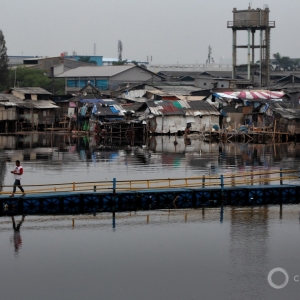Welcome to “What’s Up With Water,” your need-to-know news of the world’s water from Circle of Blue. I’m Eileen Wray-McCann.
In the United States, once again, winter weather crippled the drinking water system in Mississippi’s largest city. For the second year in a row, freezing temperatures left parts of Jackson with little to no running water. The problems in the state’s capital city began when a water main broke. They continued when freezing temperatures caused multiple pipes to burst. A faulty membrane at the treatment plant delayed work to restore water pressure to affected residents. The disruptions forced several public schools to put classes online or to move students to another campus. The outages coincided with increased federal scrutiny of Jackson’s water system. The EPA notified the city on January 25 that it needs to repair and maintain its equipment in order to provide reliable water. Funding these essential upgrades has been difficult for the poor, majority-Black city. The EPA is hoping that the state of Mississippi will help. The state received $79 million for water systems this year from the federal infrastructure package. A portion of these funds could be allocated to Jackson.
In New Mexico, state officials are preparing for another dry year in the Rio Grande basin. The governor’s top water adviser said that farmers should consider leaving fields unplanted in order to conserve water supplies. Mike Hamman said that snowpack runoff will probably be slim this spring, and New Mexico still must meet its water delivery obligations to neighboring states. The Associated Press reports that New Mexico officials want to use financial incentives to nudge farmer behavior. Lawmakers are seeking $48 million to expand a program along the Rio Grande that pays farmers to not plant their fields.
Drought is also front of mind in Somalia, where dry conditions could force up to a million people to leave home in the next three months. That grim forecast comes from the International Organization for Migration, the UN agency that tracks the how people move in response to political and environmental pressures. Those pressures have been building for months in Somalia. The national government declared a drought emergency in November. Wells are going dry and livestock are dying. Mohamed Abdelazim, the UN emergency coordinator for Somalia, said that “immediate action” is necessary to save lives and livelihoods. For that reason, the UN and partner agencies are drilling new wells and distributing food, water, and hygiene kits. The goal is to keep rural areas viable so that people don’t flee to the cities, where social services are already strained.
And that’s “What’s Up With Water,” from Circle of Blue, where water speaks. More water news and analysis await you at
circleofblue.org. This is Eileen Wray-McCann – thanks for being here.






